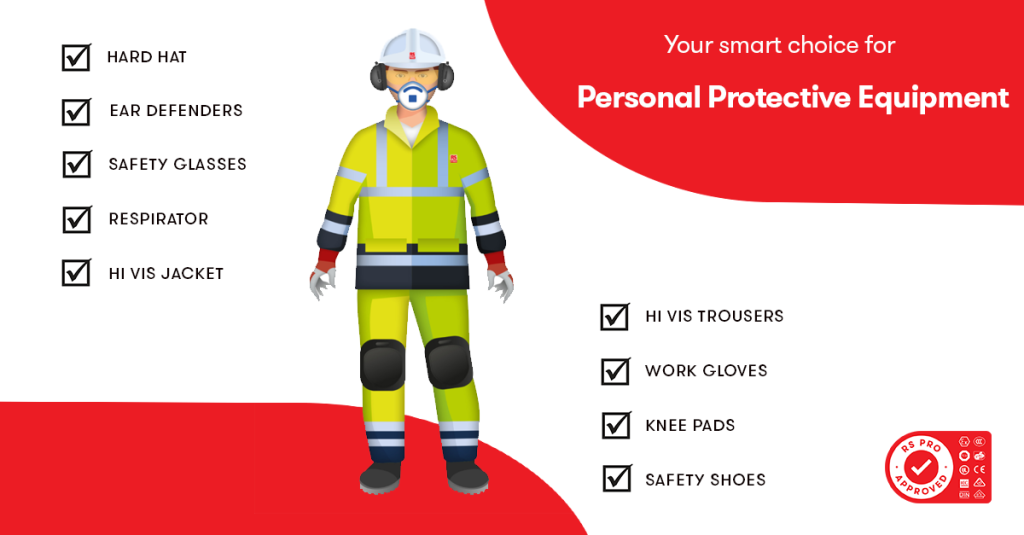Ever wonder what stands between a lineman and a 7,200-volt power line? It’s not luck—it’s the right personal protective equipment (PPE). Working as a utility lineman ranks among the most dangerous jobs in America, with approximately 26 to 50 fatalities occurring each year. With electrocution accounting for nearly half of all fatal injuries to electrical power-line workers and falls claiming another 21%, having the proper PPE isn’t just recommended—it’s absolutely essential.
Whether you’re a trainee lacing up your first pair of lineman pole climbing boots or a seasoned journeyman evaluating new lineman climbing gear, understanding PPE requirements can literally save your life. This guide breaks down everything you need to know about personal protective equipment for linemen, from the seven essential types to choosing between steel, aluminum, and titanium climbers.
What PPE Do Linemen Wear?
Linemen wear specialized personal protective equipment designed to protect against the unique hazards of working with high-voltage electricity at extreme heights. The essential PPE for linemen includes flame-resistant (FR) clothing, rubber insulating gloves with leather protectors, electrical hazard (EH) rated boots, full-body harnesses with lanyards, Class E hard hats with chin straps, safety glasses rated to ANSI Z87.1 standards, and hearing protection.
Unlike workers in other industries, linemen face a deadly combination of electrical and fall hazards simultaneously. That’s why their PPE must meet stringent standards set by organizations like OSHA, NFPA, and ANSI. For instance, FR clothing must be NFPA 70E compliant and arc-rated to the appropriate Hazard Risk Category, while fall protection harnesses must meet ANSI Z359 standards.
The rubber insulating gloves that linemen depend on require dielectric testing every six months to ensure their integrity. These gloves, worn with leather protectors, create a critical barrier between workers and live electrical circuits carrying thousands of volts. Similarly, lineman climbing boots must have an EH rating, meaning they can withstand 18,000 volts for one minute with less than 1.0 milliampere of current flow.
What Is a PPE Checklist?
A PPE checklist is a systematic tool used to verify that all required personal protective equipment is present, properly fitted, in good condition, and compliant with safety standards before beginning work. For linemen specifically, a PPE checklist ensures nothing gets overlooked when preparing for dangerous work at heights around energized equipment.
Think of a PPE checklist as your pre-flight inspection before climbing that pole. Just as pilots wouldn’t take off without running through their checklist, linemen shouldn’t ascend without confirming every piece of safety equipment is accounted for and functional. A proper lineman PPE checklist includes verification of personal climbing equipment (body belt, climbers, and personal fall restriction device), hard hat, safety glasses, flame-resistant clothing, hand protection, and foot protection.
Safety checklists serve multiple purposes beyond just ensuring compliance. They create a uniform procedure for safety inspections, help identify hazards before they cause injuries, and provide documentation that can prove invaluable during OSHA inspections. For utility companies, implementing a standardized PPE checklist reduces the likelihood of human error—when you’re working 60 feet up a pole with thousands of volts running through nearby lines, forgetting even one piece of equipment can have catastrophic consequences.
What Are the 7 Types of Personal Protective Equipment?
The seven essential types of personal protective equipment are head protection (hard hats), eye and face protection (safety glasses and face shields), hearing protection (earplugs or earmuffs), respiratory protection (masks and respirators), hand protection (gloves), foot protection (safety boots), and body protection (coveralls, aprons, and fall protection harnesses).
Head Protection serves as the first line of defense against falling objects, accidental impacts, and electrical hazards. For linemen, Class E hard hats are mandatory as they’re rated to protect against electrical shocks up to 20,000 volts.
Eye and Face Protection shields workers from sparks, electrical arcs, and debris. Safety glasses must meet ANSI Z87.1 standards and should include side shields for comprehensive coverage. When working on live electrical circuits, face shields provide critical protection against arc flash incidents.
Hearing Protection prevents permanent hearing damage from prolonged exposure to transformer noise and power tools. Linemen working near substations or using power equipment should wear earplugs or earmuffs rated for their specific work environment.
Respiratory Protection becomes essential when linemen work in confined spaces or around hazardous materials. While not needed for routine pole work, respirators rated for specific hazards protect against dust, gases, and vapors.
Hand Protection for linemen goes beyond standard work gloves. Rubber insulating gloves rated for specific voltage levels are mandatory when working on or near energized equipment. These must always be worn with leather protector gloves to prevent cuts and punctures that could compromise the rubber’s insulating properties.
Foot Protection requires specialized EH-rated boots that can withstand electrical hazards. These lineman pole climbing boots feature steel or composite toes for impact protection, aggressive treads for superior grip, raised heels for climbing with gaffs, and waterproof construction for all-weather work.
Body Protection and Fall Protection encompasses FR clothing and full-body harnesses. Flame-resistant shirts and pants protect against arc flash incidents—synthetic underlayers can melt onto skin during an arc flash, so cotton base layers are preferred. Full-body harnesses distribute fall arrest forces across the body and must be inspected before each use.
What Personal Protective Equipment Do Linemen Use?
Linemen use specialized PPE including insulated rubber gloves with leather protectors, FR clothing rated for arc flash protection, EH-rated climbing boots, full-body harnesses with shock-absorbing lanyards, Class E hard hats, lineman climbing gear (climbers and gaffs), lineman climbing belts, and safety glasses.
The selection of lineman climbing gear deserves special attention because it directly impacts both safety and work efficiency. Climbers, also known as hooks, gaffs, or spikes, are metal devices strapped to boots that allow linemen to ascend utility poles safely. The leg iron can be constructed from three different materials—steel, aluminum alloy, or titanium—each offering distinct advantages.
read more : How to Turn Your Ideas into Games Easily
Comparing Climber Materials: Steel vs. Aluminum vs. Titanium
Steel Climbers have been the gold standard for generations. They’re incredibly durable, built to withstand demanding conditions, and come at the most affordable price point. Steel climbers are rated to 350 pounds and exceed ASTM F887 standards. However, they’re the heaviest option, which can lead to leg fatigue during long shifts. When you’re climbing multiple poles throughout the day, those extra pounds add up quickly.
Best for: Linemen who value stability and longevity, especially those working in demanding conditions. Budget-conscious workers and those early in their careers will appreciate steel’s lower initial cost.
Aluminum Climbers revolutionized the industry by offering significant weight savings without sacrificing too much strength. These climbers typically weigh 30-40% less than steel equivalents, dramatically reducing leg fatigue during all-day climbing sessions. Many aluminum models feature patented technology that keeps the gaff pointed toward the heart of the pole, promoting ease of climbing and a more natural upright position.
The trade-off? Aluminum climbers cost more upfront than steel—typically 20-30% higher—and may show wear faster in extremely demanding environments. However, for many linemen, the reduced fatigue and improved agility make aluminum worth the premium.
Best for: Linemen who prioritize weight savings and agility, or those who climb frequently and want to reduce fatigue. Mid-career professionals who can justify the higher initial investment for daily comfort.
Titanium Climbers represent the premium tier of lineman climbing gear. Weighing only 17 ounces, titanium climbers combine strength, lightweight functionality, and comfort in a package unmatched on the market. Titanium offers an exceptional strength-to-weight ratio—it’s lighter than aluminum yet stronger than steel in many applications.
Titanium’s natural corrosion resistance means these climbers will maintain their integrity for years without rust concerns. For linemen working in harsh weather conditions or near saltwater environments, this is particularly valuable. The significant downside? Cost. Titanium climbers can run 3-5 times the price of steel climbers and about twice the cost of aluminum options.
Best for: Experienced linemen who climb daily and can justify the premium investment. Those working in corrosive environments where equipment longevity is paramount.
Lineman Climbing Belt and Boot Essentials
The lineman climbing belt wraps around the lower back and waist, attaching to a pole climbing strap that prevents slipping during a fall. Modern lineman belts are constructed from high-quality leather with neoprene backing for comfort. Proper sizing is crucial—lineman belts are measured by the distance between D-rings, not waist size. The proper measurement is taken by wrapping a measuring tape around your back from one hip bone to the other.
Lineman pole climbing boots need several specific features. EH-rated protection is non-negotiable—these boots must withstand 18,000 volts. Superior grip and traction are essential when climbing poles in any weather condition. Boots with Vibram soles offer outstanding tread while remaining waterproof. Raised heels increase safety and comfort when climbing poles and using gaffs. High-shaft construction (8-10 inches) provides ankle support to prevent sprains. The distinctive lineman patch sewn into the boot’s side protects against wear from shimmying up poles.
Smart Grid Maintenance: Modern Tools for Linemen
As utility infrastructure evolves into smart grids, linemen are increasingly working with advanced monitoring and control equipment. Smart sensors and Phasor Measurement Units (PMUs) provide synchronized measurements of voltage and current across the grid, enabling real-time monitoring. Advanced Metering Infrastructure (AMI) systems include smart meters that provide real-time data on energy consumption.
SCADA systems (Supervisory Control and Data Acquisition) monitor and control smart grid components in real-time. When integrated with AMI systems, SCADA monitors energy flow and alerts when unusual conditions arise. Wireless sensor networks deployed throughout the grid monitor environmental conditions and equipment parameters, enabling predictive maintenance.
Working with smart grid equipment requires linemen to expand their skill sets beyond traditional electrical work. They need to understand communication protocols, sensor calibration, and data transmission systems. However, the fundamental PPE requirements remain unchanged—linemen still need comprehensive personal protective equipment whether working on a traditional pole or installing smart grid sensors.
Creating Your Lineman PPE Checklist
A comprehensive PPE checklist should be reviewed before every shift. Essential items include body belt or full-body harness, climbers with sharp gaffs, personal fall restriction device, rubber insulating gloves with current certification, leather protector gloves, FR shirt and pants meeting NFPA 70E standards, Class E hard hat with chin strap, ANSI Z87.1 safety glasses, and EH-rated lineman climbing boots.
Before each use, conduct visual and functional inspections of all PPE. Look for cuts, tears, burns, or physical damage. Check certification labels and testing dates, particularly on rubber goods. Any defective items should be immediately removed from service and replaced.
Conclusion
Working as a utility lineman demands courage, skill, and unwavering attention to safety. Personal protective equipment serves as the critical barrier between linemen and the hazards they face daily—electrocution, falls, burns, and impacts. From the lineman climbing gear that allows them to scale poles safely to the FR clothing that protects against arc flash, every piece of PPE plays a vital role.
The choice of equipment matters, whether it’s selecting between steel, aluminum, or titanium climbers based on your career stage and budget, or ensuring your lineman pole climbing boots provide the EH-rated protection needed. A thorough PPE checklist ensures nothing is overlooked before beginning dangerous work at heights. As the industry evolves toward smart grid technology, linemen are adapting to work with advanced monitoring equipment while maintaining the same rigorous PPE standards that have always kept them safe.
Remember: PPE is not just equipment; it’s your lifeline. Inspect it daily, maintain it properly, replace it when needed, and never compromise on safety.
Frequently Asked Questions (FAQs)
Q1: How often should lineman rubber gloves be tested?
Rubber insulating gloves must be dielectrically tested every six months according to OSHA 1910.137 standards. Additionally, linemen should perform a visual inspection before each use, checking for cuts, punctures, or damage. The gloves should also undergo an air test to check for leaks. Any gloves showing damage or that fail testing should be immediately removed from service.
Q2: What’s the difference between a lineman belt and a full-body harness?
A lineman belt wraps around the waist and lower back, providing support while working on poles. A full-body harness includes straps over the shoulders, chest, waist, and thighs, distributing fall arrest forces across the entire body. Under current OSHA regulations, many utilities now mandate full-body harnesses instead of belts alone because they provide superior fall arrest protection and reduce injury severity if a fall occurs.
Q3: Are aluminum climbers worth the extra cost compared to steel?
For linemen who climb frequently, aluminum climbers typically justify their 20-30% higher cost through reduced leg fatigue and improved agility. The weight savings of 30-40% become significant over a full day of climbing multiple poles. Mid-career and experienced linemen usually find the comfort worth the investment. However, apprentices or linemen who only climb occasionally may prefer steel climbers’ lower upfront cost and proven durability.
Q4: Can I use composite toe boots instead of steel toe for lineman work?
Yes, composite toe boots are acceptable and often preferred for lineman work. Composite materials like fiberglass, carbon fiber, or Kevlar provide impact protection equivalent to steel toes while being lighter and non-conductive. As long as the boots have an EH rating and meet ASTM F2413 standards for electrical hazard protection, composite toes are safe. Many linemen prefer composite toes because they don’t conduct cold in winter.
Q5: What should I do if I notice damage to my PPE during a shift?
Stop work immediately and remove the damaged equipment from service. Do not attempt to continue using compromised PPE—even minor damage to electrical protective equipment can create life-threatening situations. Notify your supervisor and replace the damaged item before resuming work. OSHA requires employers to provide replacement PPE at no cost to workers, so there’s no excuse for using damaged protective gear.




